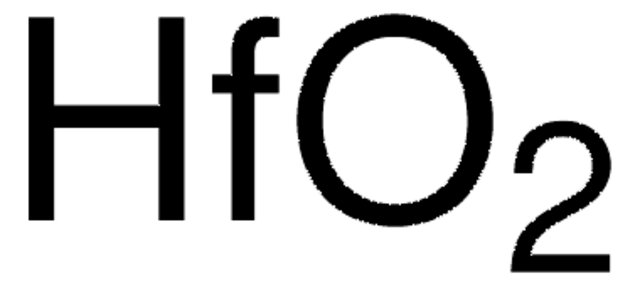230693
Zirconium(IV) oxide
powder, 5 μm, 99% trace metals basis
Synonym(s):
Zirconia
About This Item
Recommended Products
Quality Level
Assay
99% trace metals basis
form
powder
reaction suitability
reagent type: catalyst
core: zirconium
particle size
5 μm
bp
5000 °C (lit.)
mp
2700 °C (lit.)
density
5.89 g/mL at 25 °C (lit.)
application(s)
battery manufacturing
SMILES string
O=[Zr]=O
Looking for similar products? Visit Product Comparison Guide
General description
Application
Storage Class Code
13 - Non Combustible Solids
WGK
nwg
Flash Point(F)
Not applicable
Flash Point(C)
Not applicable
Personal Protective Equipment
Choose from one of the most recent versions:
Already Own This Product?
Find documentation for the products that you have recently purchased in the Document Library.
Articles
Innovation in dental restorative materials is driven by the need for biocompatible and natural-appearing restoration alternatives. Conventional dental materials like amalgam and composite resins have inherent disadvantages.
Our team of scientists has experience in all areas of research including Life Science, Material Science, Chemical Synthesis, Chromatography, Analytical and many others.
Contact Technical Service